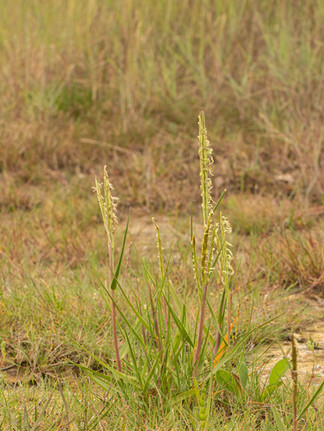Wild Lincolnshire: The Coast
- Dawn McCall
- Aug 26, 2024
- 3 min read
Updated: Jul 7

Lincolnshire Coastal Habitat Locations
Examples of Salt Marsh and Sand Dune in Lincolnshire are shown on the map and the photographs below.

Map above: Data used from Magic Maps.
The Lincolnshire coast runs 50 miles down the border of the North Sea and stretches from The Wash to the estuary of the river Humber. Lincolnshire's coast has three main habitat types- Sand Dune, Salt Marsh, and Mudflat.
Sand Dunes
Sand Dunes are dynamic and inhospitable places for the majority of plants. This is because the dunes are forever moving and only special plants can tolerate these conditions. Plants have to be tough here as they have to be able to tolerate the salt, drought and to be able to recolonize on disturbed ground.

Above: Some of the pioneer plants at Crook Bank.
The wind from the sea helps blow sand inshore. Pebbles and rocks trap this sand dropped on the beach by the sea. This then provides the right conditions for pioneer plants to colonize and stabilize the new dunes such as Marram Grass, Lyme-grass, and Sand Couch. After these plants die the soil is improved and other plants can start to develop and colonize. This is how dunes are formed. This type of dune is called an embryo dune.

Sand Dunes have 4 main types. As the dunes develop and get further away from the sea, they get more fixed. The 4 main types of dunes are young Embryonic Dunes > Mobile (Yellow) Dunes > Semi-fixed (Grey) Dunes > Fixed (Mature) Dunes.
Sand Dune Plants in Lincolnshire
Sand Dunes are associated with more than 120 different plants and more than 70 of these are nationally rare or a red-data book species. According to a survey of Sand Dune vegetation by G. P Radley in 1994, Lincolnshire has 34 Sand Dune-associated plants on its coast. Looking at Table 1 you can see that nearly half of the plants are in the grasses, rushes, and sedges group. You can also see what area of the dunes different plants like.

Above: Table 1
These were counted over 5 Sand Dune sites listed below (Table 2). The table shows the 5 sites, the size of the site in hectares, and their total size overall. This shows 1235 hectares of Sand Dune are in Lincolnshire.

Above: Table 2
Salt Marsh & Mudflat

Above: Salt Marsh and Mudflat at RSPB Frampton Marsh.
As you can see from the top map Lincolnshire's coast has a large amount of Salt Marsh within its area. Salt Marsh and mudflat are similar and transition into each other continuously. While mudflat typically has little or no vegetation, Salt Marsh on the other hand supports a much wider amount of plant species. Salt Marsh develops on Mudflat and is turned into Salt Marsh by the accumulation of mud, which gets raised above the water level. This then gets colonized by salt-tolerant plants such as Common Cord-grass, Arrowgrass, Common Sea-lavender, and Glassworts (Shown in the picture below.)

Above: The transition from mudflat to Salt Marsh.
These pioneer plants help to stabilize the mud which helps to capture more mud for other plants to grow on. This then can provide important shelter and feeding grounds for many invertebrates, birds, and several species of fish.

Above: Brent Geese feeding on the Salt Marsh over Winter.

Above: Oystercatchers feeding on Mudflat next to the Wash.
Salt Marsh Plants in Lincolnshire
Salt Marsh occurs in sheltered places between low and high-tide mark. These can be behind beaches, along estuaries and occur only at the uppermost part of the tidal zone.

Salt-marsh plants have adaptations that make them able to exist in this habitat. These include fleshy, swollen or reduced and modified leaves. Most have a very high concentration of salt in their sap (much higher the the seawater). This enables them to absorb water through their roots when salt levels are high.
Some of the Typical plants in Lincolnshire are:

Thankyou for reading, I hope this short post has shown you some of the variety the Lincolnshire coast has in terms of its ecology and importance for wildlife.
If you enjoyed this post join me in my next post where I will be looking at the Lincolnshire Wolds and its Chalk Streams.

































Comments